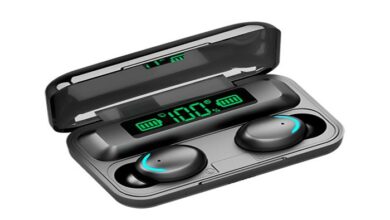Imresizer Dimensions: The Ultimate Guide to Resizing Images Effectively

In the digital world, resizing images is essential for various purposes, from website optimization to social media uploads. One of the most efficient tools available for this task is Imresizer. Understanding Imresizer dimensions is crucial for achieving the right image quality and file size without compromising performance. In this guide, we will explore everything you need to know about Imresizer dimensions and how to use them effectively.
Imresizer Dimensions: What Are They and Why Do They Matter?
imresizer dimensions refer to the width and height specifications that the tool allows users to set when resizing images. These dimensions play a significant role in determining the quality, file size, and usability of an image. Whether you’re optimizing pictures for a website, a blog, or social media platforms, using the correct Imresizer dimensions ensures that your images look professional and load efficiently.
Imresizer Dimensions: Choosing the Right Size for Your Needs
Selecting the appropriate Imresizer dimensions depends on the intended use of the image. For instance, web images should have optimized dimensions to maintain fast loading speeds, while social media images need specific dimensions to fit platform requirements. With Imresizer, you can easily adjust dimensions to meet your needs, ensuring that your images are both visually appealing and functionally effective.
Imresizer Dimensions: How to Resize Images Without Losing Quality
One of the biggest concerns when resizing images is maintaining quality. Imresizer dimensions allow users to resize photos while preserving clarity. To avoid pixelation, it’s crucial to use the correct settings, such as maintaining the aspect ratio and choosing the right resolution. Imresizer provides intuitive tools to adjust dimensions without sacrificing image quality, making it an excellent choice for designers and content creators.
Imresizer Dimensions: Best Practices for Different Platforms
Different platforms have unique requirements for image sizes. By understanding Imresizer dimensions, users can optimize their images accordingly:
- Websites: Images should be optimized for faster loading speeds, typically with widths of 1200px to 2000px.
- Instagram: Square images should have dimensions of 1080x1080px, while stories require 1080x1920px.
- Facebook: Cover photos should be 820x312px, and post images should be 1200x630px.
- Twitter: Header images require dimensions of 1500x500px, while profile pictures should be 400x400px.
- YouTube: Thumbnails should be 1280x720px for optimal display. Using the right Imresizer dimensions for each platform ensures that your images appear sharp and professional.
Imresizer Dimensions: Compression and File Size Optimization
Apart from resizing, reducing file size is essential for faster page loads and better performance. Imresizer dimensions allow users to adjust width and height while maintaining file compression settings. By reducing file size without significant quality loss, users can enhance website performance and ensure smooth viewing experiences. Using the right Imresizer dimensions and compression techniques can significantly improve online engagement.
Imresizer Dimensions: Advanced Features and Customization Options
Imresizer offers advanced customization options that go beyond simple resizing. Users can set custom Imresizer dimensions, crop images, and apply additional effects to improve aesthetics. The ability to define specific dimensions makes Imresizer a powerful tool for content creators who require precise image adjustments. Whether resizing for print or digital media, imresizer dimensions provide flexible options to achieve the perfect output.
Imresizer Dimensions: Comparing with Other Image Resizing Tools
While there are many image resizing tools available, Imresizer dimensions stand out due to their user-friendly interface and efficiency. Compared to other tools like Photoshop, Canva, or online image resizers, Imresizer provides a simpler and quicker solution for resizing without complex settings. Its ability to quickly adjust dimensions while maintaining quality makes it a preferred choice for both beginners and professionals.
Conclusion
Understanding Imresizer dimensions is essential for optimizing images for various applications. Whether you need images for websites, social media, or personal projects, using the correct dimensions ensures high-quality results. With Imresizer, resizing images becomes effortless, allowing users to achieve the perfect balance between size and quality. By following best practices and utilizing Imresizer dimensions effectively, anyone can enhance their visual content seamlessly.
FAQs
1. What are the ideal Imresizer dimensions for a website?
The ideal Imresizer dimensions for web images typically range from 1200px to 2000px in width, depending on the design requirements.
2. How can I resize an image using Imresizer dimensions without losing quality?
To maintain quality, ensure that the aspect ratio is preserved and use high-resolution settings when resizing with Imresizer dimensions.
3. What are the recommended Imresizer dimensions for Instagram posts?
For Instagram, square posts should be 1080x1080px, while stories require 1080x1920px dimensions.
4. Does Imresizer allow batch resizing with specific dimensions?
Yes, Imresizer dimensions can be applied to multiple images at once, allowing users to resize batches efficiently.
5. What is the difference between Imresizer dimensions and cropping?
Imresizer dimensions adjust the overall size of an image, while cropping removes specific parts to fit a particular aspect ratio.




